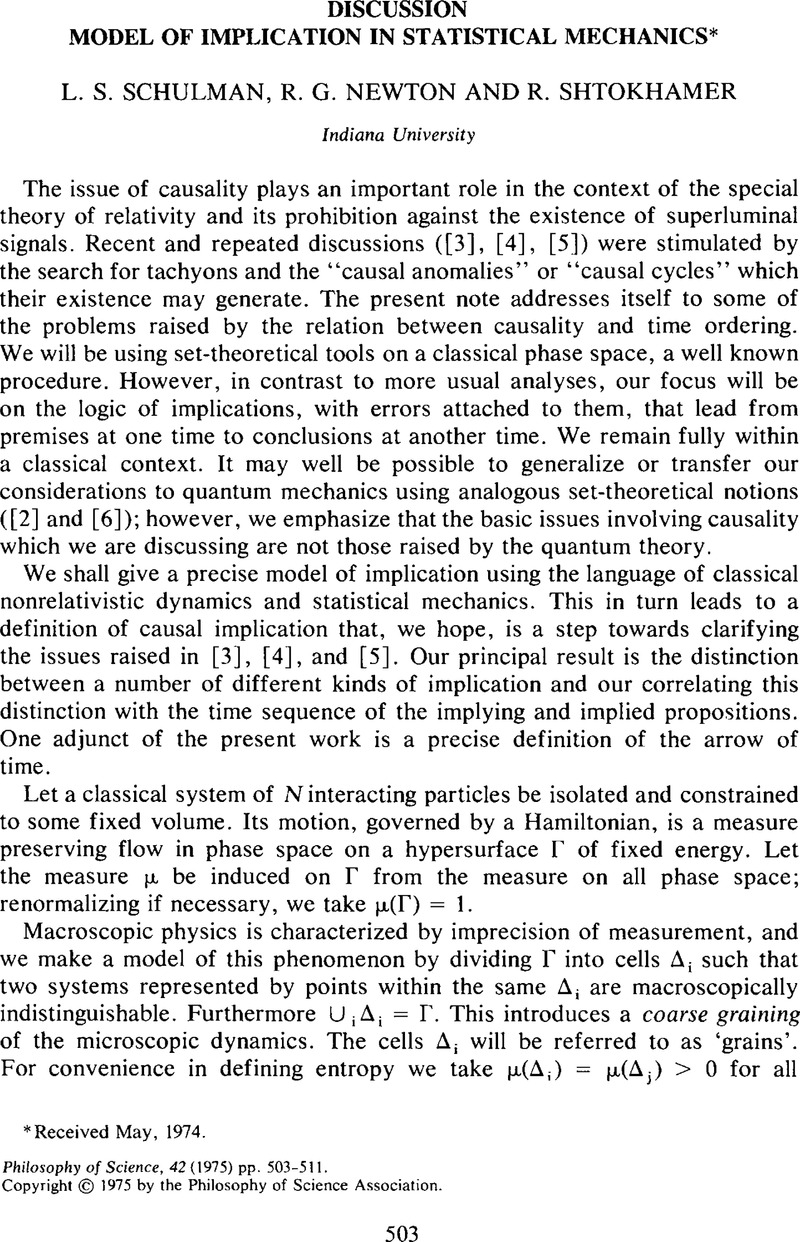Crossref Citations
This article has been cited by the following publications. This list is generated based on data provided by Crossref.
Schulman, L.S.
1984.
Definite measurements and deterministic quantum evolution.
Physics Letters A,
Vol. 102,
Issue. 9,
p.
396.
Schulman, L. S.
1986.
Deterministic quantum evolution through modification of the hypotheses of statistical mechanics.
Journal of Statistical Physics,
Vol. 42,
Issue. 3-4,
p.
689.
Schulman, L.S
1991.
Definite quantum measurements.
Annals of Physics,
Vol. 212,
Issue. 2,
p.
315.
Schulman, Lawrence S.
2012.
Experimental Test of the “Special State” Theory of Quantum Measurement.
Entropy,
Vol. 14,
Issue. 4,
p.
665.





